Strong El Niño in 2023: Stay Safe With Preparedness Plans for Vulnerable Countries
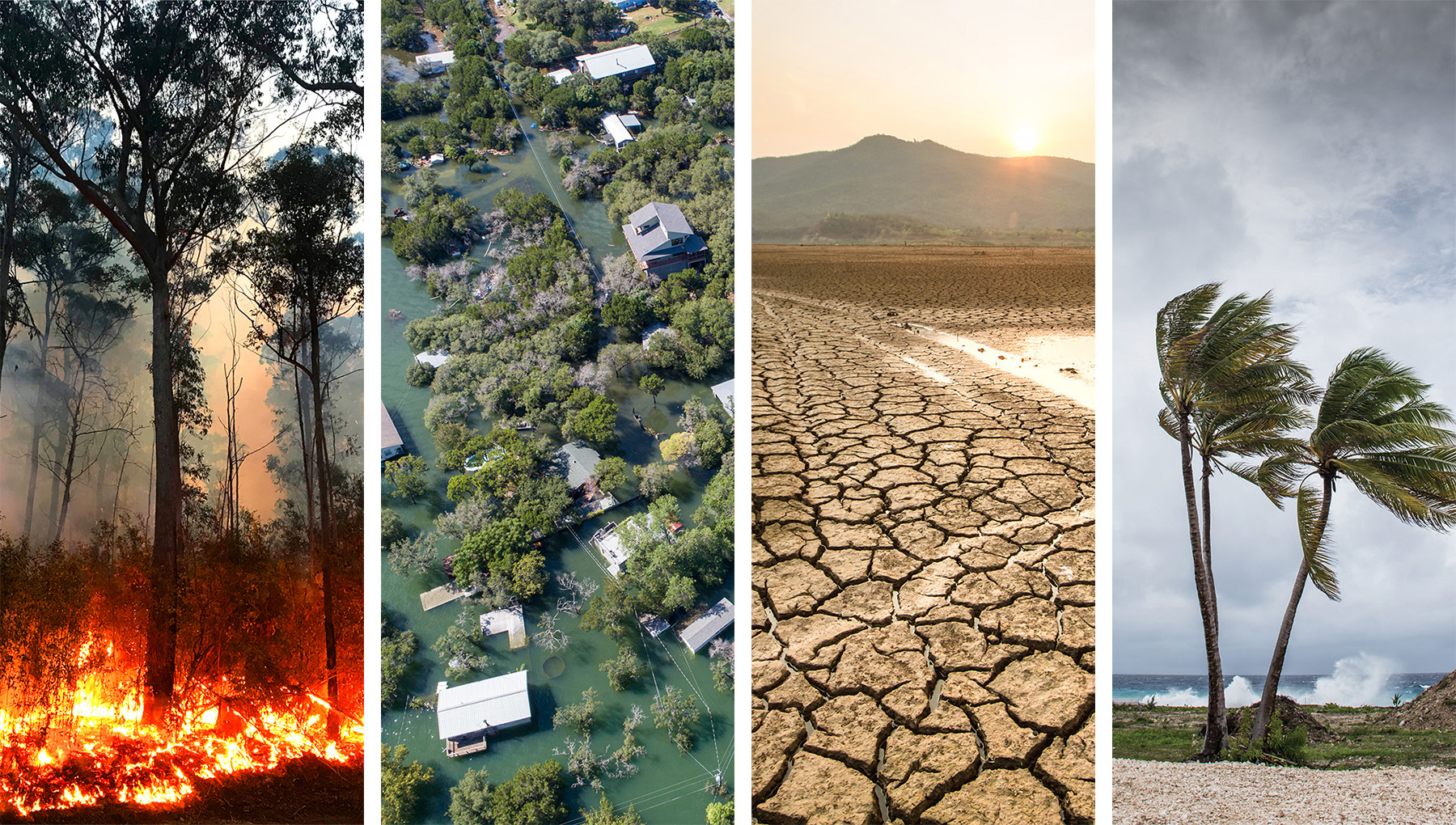
Be ready for a powerful El Niño in 2023. Disaster preparedness plans for individual and community protection in vulnerable countries.
Andrei Molinaro
The International Research Institute for Climate and Society (IRI) predicts a 90% chance of a powerful El Niño in 2023, potentially as intense as the 1997-1998 event. As a result, vulnerable countries must urgently prepare and implement effective plans to lower risks and increase resilience.
El Niño is a natural event when the Pacific Ocean gets unusually warm, affecting global weather. It has severe impacts on global food security, livelihoods, health, the environment, peace and stability. These impacts arise from droughts, floods, storms, heat waves, and other natural disasters.
To address these risks, immediate action is crucial for all involved parties, so we have outlined actions to improve readiness, response, and recovery, specifically targeting the risks associated with El Niño-related natural disasters. Our focus is on each region and country, considering their unique geographical, climatic, and socio-economic circumstances.
Tecnologies That Can Help During El Niño
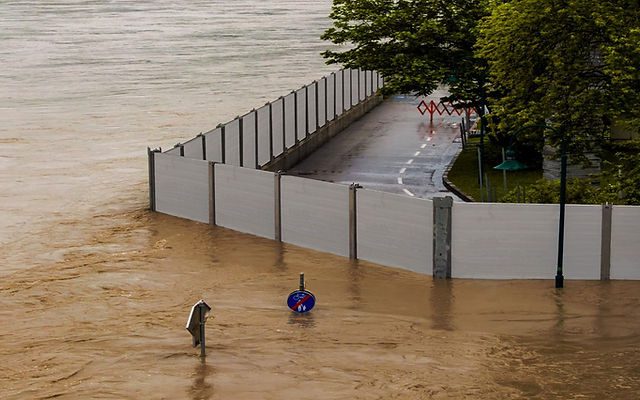
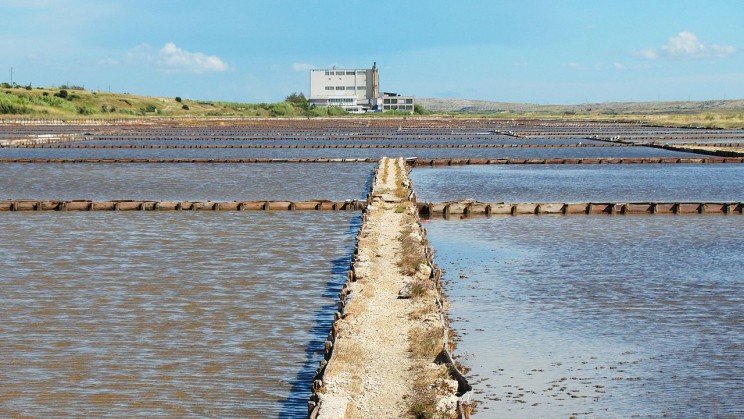
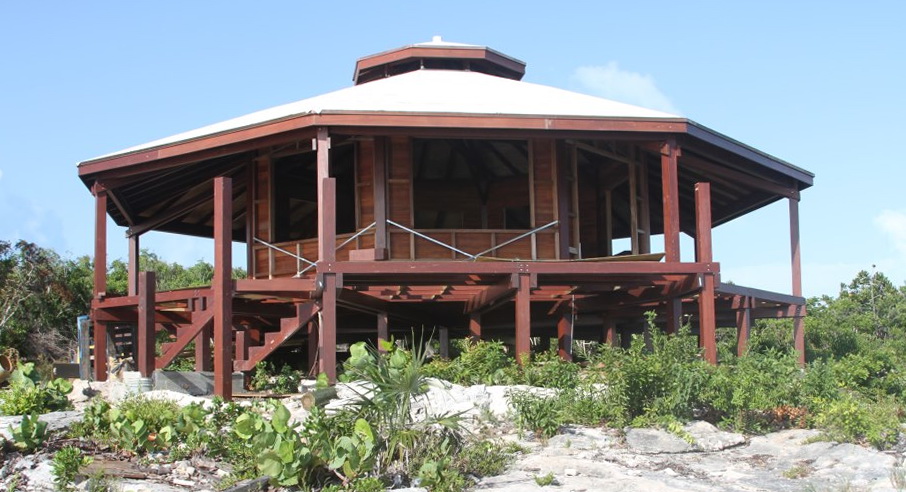
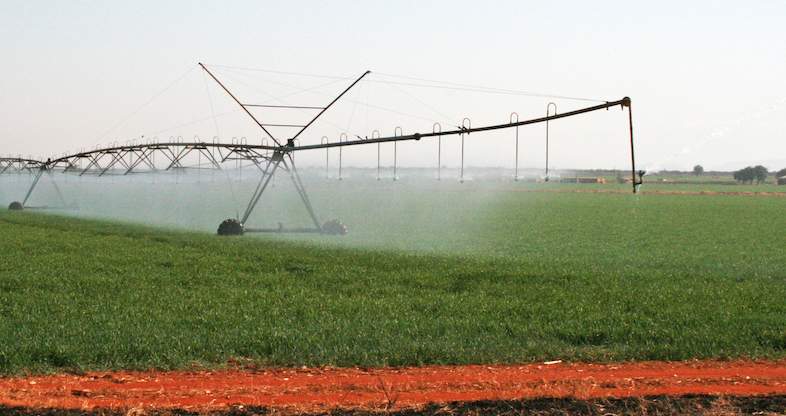

El_Niño
El Niño usually brings floods to the west coast of Ecuador, Peru and Colombia, and droughts to the Amazon and north-east of the continent.
Some of the countries that are most affected by El Niño are Peru, Ecuador, Colombia, Brazil and Bolivia.
The types of disasters that are associated with El Niño include landslides, mudslides, wildfires, crop failures, water shortages, disease outbreaks and coral bleaching.
El Niño usually affects the weather patterns in Southeast Asia and the Pacific causing droughts, floods, cyclones, and wildfires.
Some of the countries that are most affected by El Niño are Indonesia, the Philippines, Papua New Guinea, Australia, and Fiji. These countries face water shortages, crop failures, food insecurity, and increased risk of diseases and pests.
El Niño also increases the intensity and frequency of tropical storms and hurricanes in the Pacific, which can cause coastal erosion, landslides, and damage to infrastructure and livelihoods.
El Niño can cause droughts, floods, heat waves, cold spells, and diseases in different parts of the continent.
Some of the countries that are most affected by El Niño are Ethiopia, Somalia, Kenya, Tanzania, Uganda, Sudan, South Sudan, Malawi, and Zimbabwe.
These countries depend on agriculture and livestock for their food security and livelihoods, and El Niño can reduce crop yields, kill animals, and increase food prices. Some of the associated risks are Rift Valley Fever, cholera, forest fires, and famine.
El Niño can cause anomalies in the distribution of rainfall and temperature.
Some countries that are most affected are Guatemala, Honduras, El Salvador and Haiti, which suffer prolonged droughts and agricultural losses.
El Niño can also influence the Atlantic hurricane season, increasing the risk of intense storms.
El Niño can raise temperatures in some regions of Asia, such as in Mainland Southeast Asia (MSA). This can cause heat stress, heatstroke, dehydration, and increased mortality.
On the other hand, changes in the monsoon season and tropical cyclones in India and Bangladesh, can cause floods, landslides and crop losses.
The El Niñometer Tool
We have developed a tool that shows if El Niño is in action, and how powerful it is.
Know if it’s time to take necessary measures for a potential rough time in your area.
Preparedness Plans
If your country/region is not included in the lists below or you need assistance in enhancing your preparedness plan and increasing protection against El Niño, please feel free to reach out to us.
South America
Most Common Natural Disasters
↪ Flooding, landslides
Disaster Preparedness Plan
↪ Strengthen early warning systems and improve forecasting capabilities to provide timely alerts to at-risk communities.
↪ Enhance infrastructure resilience by implementing measures such as river channelization, floodplain zoning, and landslide monitoring.
↪ Conduct public awareness campaigns to educate the population on preparedness and evacuation procedures.
↪ Develop emergency response plans and ensure coordination among relevant government agencies and local communities.
↪ Improve post-disaster recovery and rehabilitation efforts by providing support for housing, infrastructure, and livelihood restoration.
Individual Preparedness Tips
↪ Stay informed about weather updates and heed evacuation orders.
↪ Prepare an emergency kit with essential supplies, including food, water, medications, and important documents.
↪ Identify safe evacuation routes and shelter locations in your area.
↪ Secure valuable possessions and important documents in waterproof containers.
↪ Establish communication plans with family members and neighbors.
Most Common Natural Disasters
↪ Flooding, landslides, mudslides
Disaster Preparedness Plan
↪ Improve early warning systems and community-based monitoring to detect and respond to flood and landslide threats promptly.
↪ Conduct vulnerability assessments and develop land-use planning measures to reduce the exposure of high-risk areas.
↪ Enhance emergency response capabilities by training first responders and establishing communication networks.
↪ Promote the construction of resilient infrastructure, including reinforced riverbanks, drainage systems, and retaining walls.
↪ Implement reforestation and soil conservation programs to reduce the risk of landslides and erosion.
Individual Preparedness Tips
↪ Familiarize yourself with local evacuation routes and safe shelters.
↪ Prepare an emergency kit with essential supplies, including food, water, medications, and personal hygiene items.
↪ Secure your home by reinforcing roofs, clearing gutters, and securing loose objects.
↪ Stay informed through local news and official announcements.
↪ Establish a family emergency plan and designate a meeting point.
Most Common Natural Disasters
↪ Flooding, landslides
Disaster Preparedness Plan
↪ Improve early warning systems, including river monitoring and weather forecasting, to issue timely alerts to vulnerable communities.
↪ Enhance infrastructure resilience by implementing floodplain management measures, such as building protective barriers and improving drainage systems.
↪ Conduct risk assessments and land-use planning to prevent settlements in high-risk areas prone to landslides.
↪ Strengthen emergency response capabilities by training first responders and conducting drills.
↪ Establish coordination mechanisms between government agencies, NGOs, and local communities for effective disaster management.
Individual Preparedness Tips
↪ Stay informed about weather updates and heed evacuation orders.
↪ Prepare an emergency kit with essential supplies, including food, water, medications, and important documents.
↪ Secure your home by clearing gutters, reinforcing doors and windows, and securing outdoor furniture.
↪ Develop a communication plan with family members and neighbors.
↪ Be aware of evacuation routes and shelter locations in your area.
Most Common Natural Disasters
↪ Droughts, wildfires, heatwaves
Disaster Preparedness Plan
↪ Enhance drought monitoring and forecasting systems to assess water availability and agricultural conditions.
↪ Implement water management strategies, such as reservoir construction, water-use efficiency programs, and agricultural diversification.
↪ Strengthen wildfire prevention and mitigation measures, including early detection systems, firebreaks, and public awareness campaigns.
↪ Develop heatwave response plans, focusing on vulnerable populations and providing cooling centers and health support services.
↪ Enhance public education on sustainable land management practices and fire-safe behaviors.
Individual Preparedness Tips
↪ Conserve water and practice water-saving techniques.
↪ Create a defensible space around your property by clearing vegetation and debris.
↪ Prepare an emergency kit with essential supplies, including food, water, medications, and protective clothing.
↪ Stay informed about fire danger levels and follow instructions from local authorities.
↪ Take measures to stay cool during heatwaves, such as staying hydrated and seeking air-conditioned environments.
Most Common Natural Disasters
↪ Droughts, wildfires
Disaster Preparedness Plan
↪ Improve drought monitoring and early warning systems to provide timely information for agricultural planning and water management.
↪ Implement water conservation measures, such as promoting efficient irrigation techniques and rainwater harvesting.
↪ Establish community-based fire prevention and response programs, including firebreak construction, training, and equipment distribution.
↪ Conduct public awareness campaigns on fire safety, responsible land use, and the protection of natural resources.
↪ Strengthen coordination among government agencies, local communities, and indigenous groups to ensure effective disaster management.
Individual Preparedness Tips
↪ Conserve water in daily activities and practice water-saving habits.
↪ Maintain a defensible space around your property by removing dry vegetation and flammable materials.
↪ Prepare an emergency kit with essential supplies, including food, water, medications, and protective clothing.
↪ Stay informed about fire danger levels and follow instructions from local authorities.
↪ Be cautious with outdoor activities that could potentially start fires.
Most Common Natural Disasters
↪ Floods, landslides, droughts
Disaster Preparedness Plan
↪ Enhance flood forecasting and monitoring systems to issue early warnings and enable timely evacuations.
↪ Implement floodplain management strategies, including land-use zoning, river channel maintenance, and infrastructure improvements.
↪ Develop landslide hazard maps and implement measures such as slope stabilization and erosion control.
↪ Improve drought resilience through water conservation, efficient irrigation techniques, and sustainable water management practices.
↪ Strengthen community preparedness and response capacities through training, public awareness campaigns, and the establishment of local emergency committees.
Individual Preparedness Tips
↪ Stay informed about weather updates and follow instructions from local authorities.
↪ Prepare an emergency kit with essential supplies, including food, water, medications, and important documents.
↪ Secure your home by clearing gutters, reinforcing doors and windows, and securing outdoor furniture.
↪ Develop a family emergency plan and establish communication channels.
↪ Be aware of evacuation routes and identify safe shelter locations.
Southeast Asia and The Pacific
Most Common Natural Disasters
↪ Floods, landslides, droughts
Disaster Preparedness Plan
↪ Enhance early warning systems and community-based disaster risk reduction programs to alert and prepare vulnerable communities.
↪ Improve water management and drainage systems to mitigate flood risks and manage water resources during droughts.
↪ Implement landslide monitoring and mapping systems to identify high-risk areas and implement appropriate measures.
↪ Promote reforestation efforts to reduce the impact of landslides and improve water retention in drought-prone regions.
↪ Conduct public awareness campaigns on disaster preparedness, evacuation procedures, and sustainable land and water management practices.
Individual Preparedness Tips
↪ Stay informed about weather updates and heed evacuation orders.
↪ Prepare an emergency kit with essential supplies, including food, water, medications, and important documents.
↪ Secure your home by clearing gutters, reinforcing doors and windows, and securing outdoor objects.
↪ Follow government advisories on water usage during droughts and conserve water.
↪ Familiarize yourself with evacuation routes and safe shelter locations in your area.
Most Common Natural Disasters
↪ Typhoons, floods, landslides
Disaster Preparedness Plan
↪ Strengthen meteorological services and typhoon tracking capabilities to provide accurate and timely forecasts and warnings.
↪ Enhance early warning systems and community-based disaster risk reduction programs to improve preparedness and response.
↪ Implement flood control measures such as improved drainage systems, river channelization, and floodplain management.
↪ Conduct landslide hazard mapping and enforce regulations on land use and construction in high-risk areas.
↪ Promote public education on disaster preparedness, including evacuation procedures, emergency kits, and family communication plans.
Individual Preparedness Tips
↪ Stay updated with weather bulletins and follow instructions from local authorities.
↪ Prepare an emergency kit with essential supplies, including food, water, medications, and important documents.
↪ Secure your home by reinforcing windows and doors and trimming trees that may pose hazards.
↪ Familiarize yourself with evacuation routes and the location of designated evacuation centers.
↪ Stay informed through official channels and community announcements.
Most Common Natural Disasters
↪ Earthquakes, tsunamis
Disaster Preparedness Plan
↪ Improve earthquake monitoring and early warning systems to detect seismic activity and issue timely alerts.
↪ Develop tsunami evacuation plans for coastal communities and conduct drills to enhance preparedness.
↪ Strengthen infrastructure resilience through building codes, retrofitting, and ensuring structural stability.
↪ Enhance public awareness and education on earthquake safety, including response procedures and building resilience.
↪ Coordinate with regional and international partners to improve disaster response capabilities and information sharing.
Individual Preparedness Tips
↪ Identify safe spots in your home or workplace during an earthquake.
↪ Prepare an emergency kit with essential supplies, including food, water, medications, and important documents.
↪ Educate yourself and family members about tsunami evacuation routes and assembly points.
↪ Familiarize yourself with local warning systems and understand their signals.
↪ Stay informed through official sources and follow instructions from local authorities.
Most Common Natural Disasters
↪ Bushfires, heatwaves, floods
Disaster Preparedness Plan
↪ Enhance early warning systems for bushfires, including monitoring technologies, fire danger ratings, and public alerts.
↪ Conduct controlled burns and implement vegetation management programs to reduce fuel load and minimize fire risks.
↪ Develop floodplain management strategies, including improved drainage systems, flood mapping, and community education.
↪ Implement heatwave response plans, including public health advisories, cooling centers, and community outreach.
↪ Strengthen collaboration between emergency services, government agencies, and communities for effective disaster response.
Individual Preparedness Tips
↪ Stay informed about fire danger ratings and be prepared to evacuate if necessary.
↪ Prepare an emergency kit with essential supplies, including food, water, medications, and important documents.
↪ Clear flammable materials from around your property and maintain a well-maintained garden.
↪ Stay hydrated and avoid strenuous activities during heatwaves.
↪ Follow instructions from local authorities and monitor official sources for updates.
Most Common Natural Disasters
↪ Cyclones, floods
Disaster Preparedness Plan
↪ Strengthen meteorological services and cyclone tracking capabilities to provide accurate forecasts and timely warnings.
↪ Develop and maintain cyclone-resistant infrastructure, including buildings, shelters, and critical facilities.
↪ Implement flood mitigation measures, such as improved drainage systems and land-use planning.
↪ Enhance community preparedness through public education campaigns, early warning systems, and evacuation plans.
↪ Improve coordination between government agencies, NGOs, and communities for effective disaster response.
Individual Preparedness Tips
↪ Stay updated with weather bulletins and heed evacuation orders.
↪ Prepare an emergency kit with essential supplies, including food, water, medications, and important documents.
↪ Secure your home by reinforcing windows and doors and trimming trees that may pose hazards.
↪ Familiarize yourself with evacuation routes and the location of designated evacuation centers.
↪ Stay informed through official channels and community announcements.
Africa
Most Common Natural Disasters
↪ Droughts, floods
Disaster Preparedness Plan
↪ Develop and implement drought management strategies, including water conservation measures, efficient irrigation systems, and water demand management.
↪ Improve early warning systems and monitoring for floods, including river gauges, rainfall forecasting, and emergency response protocols.
↪ Enhance floodplain management through infrastructure development, flood mapping, and community education.
↪ Promote climate-resilient agriculture practices, such as drought-resistant crops and water-efficient farming techniques.
↪ Strengthen community-based disaster risk reduction programs and public awareness campaigns.
Individual Preparedness Tips
↪ Conserve water by fixing leaks, using water-saving devices, and practicing efficient water usage.
↪ Prepare an emergency kit with essential supplies, including food, water, medications, and important documents.
↪ Stay informed about weather forecasts and flood warnings.
↪ Monitor water levels in rivers and dams in your area.
↪ Follow instructions from local authorities and evacuate if necessary.
Most Common Natural Disasters
↪ Droughts, floods
Disaster Preparedness Plan
↪ Strengthen early warning systems and drought monitoring to provide timely information for decision-making and response.
↪ Implement drought-tolerant crop varieties and sustainable land management practices to enhance agricultural resilience.
↪ Enhance water resource management through improved irrigation systems, rainwater harvesting, and watershed protection.
↪ Develop flood early warning systems and establish emergency response mechanisms for flood-prone areas.
↪ Improve social protection programs and safety nets for vulnerable communities affected by droughts and floods.
Individual Preparedness Tips
↪ Store enough food and water to sustain you and your family during droughts or floods.
↪ Prepare an emergency kit with essential supplies, including food, water, medications, and important documents.
↪ Stay updated with weather forecasts and heed evacuation orders if necessary.
↪ Participate in community-based disaster preparedness and response activities.
↪ Seek assistance from local authorities or humanitarian organizations if needed.
Most Common Natural Disasters
↪ Floods, cyclones
Disaster Preparedness Plan
↪ Strengthen flood forecasting and early warning systems to provide timely alerts and support evacuation efforts.
↪ Enhance community preparedness through the establishment of evacuation plans, early warning dissemination mechanisms, and community drills.
↪ Improve water drainage systems, embankments, and floodplain management to reduce the impact of floods.
↪ Develop cyclone response plans, including cyclone shelters, emergency communication systems, and disaster response coordination.
↪ Conduct public awareness campaigns on flood and cyclone preparedness, including safe evacuation procedures and the importance of early action.
Individual Preparedness Tips
↪ Stay informed about weather forecasts, flood warnings, and cyclone updates.
↪ Prepare an emergency kit with essential supplies, including food, water, medications, and important documents.
↪ Familiarize yourself with evacuation routes and the location of designated shelters.
↪ Secure your home by reinforcing windows and doors and clearing drains and gutters.
↪ Follow instructions from local authorities and evacuate if advised to do so.
Most Common Natural Disasters
↪ Droughts, floods
Disaster Preparedness Plan
↪ Develop early warning systems and drought monitoring tools to provide timely information for decision-making and response.
↪ Promote climate-smart agriculture practices and diversification of livelihoods to enhance resilience to droughts.
↪ Implement flood mitigation measures, including river embankments, drainage systems, and floodplain management.
↪ Strengthen water resource management through water conservation, rainwater harvesting, and efficient irrigation techniques.
↪ Enhance community-based disaster risk reduction programs and public awareness campaigns.
Individual Preparedness Tips
↪ Conserve water by fixing leaks, using water-saving devices, and practicing efficient water usage.
↪ Prepare an emergency kit with essential supplies, including food, water, medications, and important documents.
↪ Stay updated with weather forecasts and heed evacuation orders if necessary.
↪ Participate in community-based disaster preparedness and response activities.
↪ Seek assistance from local authorities or humanitarian organizations if needed.
Most Common Natural Disasters
↪ Droughts, floods
Disaster Preparedness Plan
↪ Improve early warning systems and drought monitoring to provide timely information for decision-making and response.
↪ Enhance water resource management through the rehabilitation of water sources, water conservation measures, and rainwater harvesting.
↪ Develop and implement community-based flood preparedness and response plans, including evacuation strategies and early warning dissemination.
↪ Promote climate-resilient agriculture practices, such as drought-resistant crop varieties and sustainable land management techniques.
↪ Strengthen social protection programs and safety nets for vulnerable populations affected by droughts and floods.
Individual Preparedness Tips
↪ Store enough food and water to sustain you and your family during droughts or floods.
↪ Prepare an emergency kit with essential supplies, including food, water, medications, and important documents.
↪ Stay updated with weather forecasts and heed evacuation orders if necessary.
↪ Participate in community-based disaster preparedness and response activities.
↪ Seek assistance from local authorities or humanitarian organizations if needed.
Most Common Natural Disasters
↪ Floods, droughts
Disaster Preparedness Plan
↪ Strengthen flood early warning systems and community-based floodplain management initiatives.
↪ Develop drought management strategies, including water conservation measures, sustainable agriculture practices, and drought-tolerant crop varieties.
↪ Enhance disaster risk reduction efforts through public awareness campaigns, community training, and capacity building.
↪ Implement water resource management initiatives to improve water availability and access during droughts and floods.
↪ Strengthen coordination between government agencies, NGOs, and communities for effective disaster preparedness and response.
Individual Preparedness Tips
↪ Stay updated with weather forecasts and flood warnings.
↪ Prepare an emergency kit with essential supplies, including food, water, medications, and important documents.
↪ Familiarize yourself with evacuation routes and the location of designated evacuation centers.
↪ Secure your home by reinforcing windows and doors and clearing drains and gutters.
↪ Follow instructions from local authorities and evacuate if advised to do so.
Central America and the Caribbean
Most Common Natural Disasters
↪ Floods, hurricanes
Disaster Preparedness Plan
↪ Strengthen early warning systems for floods and hurricanes, including meteorological monitoring, river gauges, and emergency communication systems.
↪ Develop and implement flood risk reduction measures, such as river channelization, improved drainage systems, and floodplain management.
↪ Enhance community preparedness through public awareness campaigns, evacuation planning, and the establishment of emergency shelters.
↪ Improve hurricane preparedness, including the development of evacuation routes, early warning dissemination, and emergency response coordination.
↪ Promote climate-resilient agriculture practices and livelihood diversification to enhance community resilience.
Individual Preparedness Tips
↪ Stay updated with weather forecasts, flood warnings, and hurricane advisories.
↪ Prepare an emergency kit with essential supplies, including food, water, medications, and important documents.
↪ Familiarize yourself with evacuation routes and the location of designated shelters.
↪ Secure your home by reinforcing windows and doors, and trimming trees and vegetation.
↪ Follow instructions from local authorities and evacuate if advised to do so.
Most Common Natural Disasters
↪ Landslides, earthquakes, volcanic eruptions
Disaster Preparedness Plan
↪ Enhance landslide risk assessment and early warning systems, including slope stability monitoring, hazard mapping, and community education.
↪ Strengthen earthquake preparedness through the implementation of building codes, structural assessments, and public awareness campaigns.
↪ Develop emergency response plans for volcanic eruptions, including evacuation protocols, ashfall mitigation measures, and community drills.
↪ Promote community-based disaster risk reduction programs, including training on first aid, search and rescue, and emergency preparedness.
↪ Improve coordination between government agencies, NGOs, and communities for effective disaster response.
Individual Preparedness Tips
↪ Identify safe locations in your area in case of landslides, earthquakes, or volcanic eruptions.
↪ Prepare an emergency kit with essential supplies, including food, water, medications, and important documents.
↪ Educate yourself and your family on earthquake safety measures, such as “Drop, Cover, and Hold On.”
↪ Follow evacuation instructions from local authorities during volcanic eruptions or landslide threats.
↪ Stay informed about volcanic activity, earthquake risks, and potential landslides in your area.
Most Common Natural Disasters
↪ Hurricanes, floods
Disaster Preparedness Plan
↪ Strengthen hurricane early warning systems, including meteorological monitoring, emergency communication systems, and evacuation protocols.
↪ Improve flood forecasting and response mechanisms, including river gauges, flood mapping, and emergency shelters.
↪ Enhance community preparedness through public awareness campaigns, evacuation planning, and training on flood response and safety.
↪ Develop and implement climate-resilient agriculture practices to minimize the impact of hurricanes and floods on food security.
↪ Promote reforestation and watershed management initiatives to reduce the risk of flooding.
Individual Preparedness Tips
↪ Stay updated with weather forecasts, hurricane advisories, and flood warnings.
↪ Prepare an emergency kit with essential supplies, including food, water, medications, and important documents.
↪ Familiarize yourself with evacuation routes and the location of designated shelters.
↪ Secure your home by reinforcing windows and doors, and clearing drains and gutters.
↪ Follow instructions from local authorities and evacuate if advised to do so.
Most Common Natural Disasters
↪ Hurricanes, floods, landslides
Disaster Preparedness Plan
↪ Enhance hurricane preparedness through improved early warning systems, evacuation planning, and emergency response coordination.
↪ Implement flood risk reduction measures, such as improved drainage systems, floodplain management, and early warning dissemination.
↪ Strengthen landslide risk assessment and mitigation efforts, including slope stabilization, hazard mapping, and community education.
↪ Develop and implement community-based disaster risk reduction programs, including public awareness campaigns and training on preparedness and response.
↪ Improve coordination between government agencies, NGOs, and communities for effective disaster management.
Individual Preparedness Tips
↪ Stay updated with weather forecasts, hurricane advisories, and flood warnings.
↪ Prepare an emergency kit with essential supplies, including food, water, medications, and important documents.
↪ Familiarize yourself with evacuation routes and the location of designated shelters.
↪ Secure your home by reinforcing windows and doors, and clearing drains and gutters.
↪ Follow instructions from local authorities and evacuate if advised to do so.
Asia
Most Common Natural Disasters
↪ Droughts, floods, cyclones
Disaster Preparedness Plan
↪ Develop and strengthen early warning systems for droughts, floods, and cyclones, including meteorological monitoring, river gauges, and weather forecasting.
↪ Implement water management strategies, including rainwater harvesting, efficient irrigation techniques, and water conservation measures.
↪ Improve flood management infrastructure, such as embankments, reservoirs, and drainage systems.
↪ Enhance cyclone preparedness through early warning dissemination, evacuation planning, and strengthening coastal infrastructure.
↪ Promote climate-resilient agriculture practices and crop diversification to mitigate the impact of droughts and floods.
Individual Preparedness Tips
↪ Stay updated with weather forecasts, flood warnings, and cyclone advisories.
↪ Prepare an emergency kit with essential supplies, including food, water, medications, and important documents.
↪ Familiarize yourself with evacuation routes and the location of designated shelters.
↪ Follow instructions from local authorities and evacuate if advised to do so during cyclones or floods.
↪ Practice water conservation methods in daily life, such as reducing water usage and fixing leaks.
Most Common Natural Disasters
↪ Floods, droughts
Disaster Preparedness Plan
↪ Enhance flood forecasting and early warning systems, including monitoring river levels, rainfall data, and flood mapping.
↪ Improve water resource management and reservoir operations to ensure sufficient water supply during droughts and effective flood control.
↪ Implement floodplain management and land-use planning measures to reduce the impact of floods.
↪ Promote community preparedness through public awareness campaigns, evacuation planning, and training on flood response and safety.
↪ Develop and implement climate-resilient agriculture practices and sustainable water management techniques.
Individual Preparedness Tips
↪ Stay updated with weather forecasts, flood warnings, and drought alerts.
↪ Prepare an emergency kit with essential supplies, including food, water, medications, and important documents.
↪ Familiarize yourself with evacuation routes and the location of designated shelters.
↪ Secure your home by reinforcing windows and doors, and clearing drains and gutters.
↪ Follow instructions from local authorities and evacuate if advised to do so during floods.
Most Common Natural Disasters
↪ Typhoons, floods
Disaster Preparedness Plan
↪ Strengthen typhoon forecasting and early warning systems, including meteorological monitoring, satellite imagery, and evacuation protocols.
↪ Implement flood risk reduction measures, such as improved drainage systems, floodplain management, and emergency response coordination.
↪ Enhance community preparedness through public awareness campaigns, evacuation planning, and training on typhoon response and safety.
↪ Develop and implement climate-resilient agriculture practices and disaster-resilient infrastructure to minimize the impact of typhoons and floods.
↪ Improve coordination between government agencies, NGOs, and communities for effective disaster response and recovery.
Individual Preparedness Tips
↪ Stay updated with weather forecasts, typhoon warnings, and flood alerts.
↪ Prepare an emergency kit with essential supplies, including food, water, medications, and important documents.
↪ Familiarize yourself with evacuation routes and the location of designated shelters.
↪ Secure your home by reinforcing windows and doors, and clearing drains and gutters.
↪ Follow instructions from local authorities and evacuate if advised to do so during typhoons or floods.
Most Common Natural Disasters
↪ Cyclones, floods
Disaster Preparedness Plan
↪ Strengthen cyclone forecasting and early warning systems, including meteorological monitoring, satellite imagery, and evacuation protocols.
↪ Enhance coastal resilience through the construction of cyclone shelters, embankments, and community-based early warning systems.
↪ Implement flood risk reduction measures, such as improved drainage systems, floodplain management, and emergency response coordination.
↪ Promote climate-resilient agriculture practices and sustainable water management techniques to mitigate the impact of floods and cyclones.
↪ Enhance community preparedness through public awareness campaigns, evacuation planning, and training on cyclone response and safety.
Individual Preparedness Tips
↪ Stay updated with weather forecasts, cyclone warnings, and flood alerts.
↪ Prepare an emergency kit with essential supplies, including food, water, medications, and important documents.
↪ Familiarize yourself with evacuation routes and the location of designated cyclone shelters.
↪ Secure your home by reinforcing windows and doors, and clearing drains and gutters.
↪ Follow instructions from local authorities and evacuate if advised to do so during cyclones or floods.
Remember, it is crucial to customize plans by utilizing local expertise, resources, and collaborating with local authorities and stakeholders.
This customization ensures better protection of lives, preservation of livelihoods, and increased resilience against the upcoming powerful El Niño event.
Additionally, this opportunity allows us to establish long-lasting resilience to future climate-related crises.



